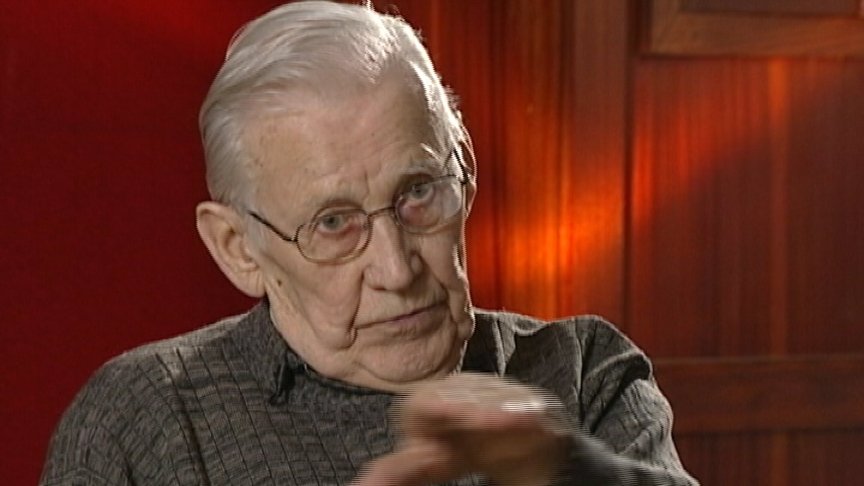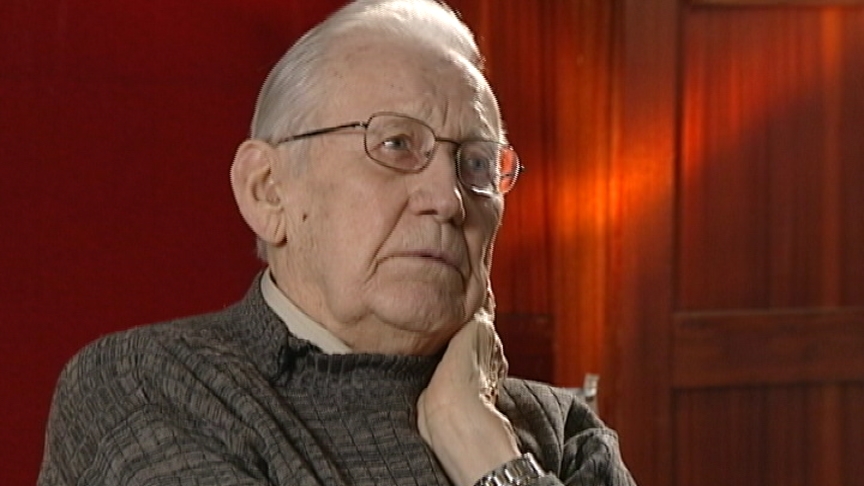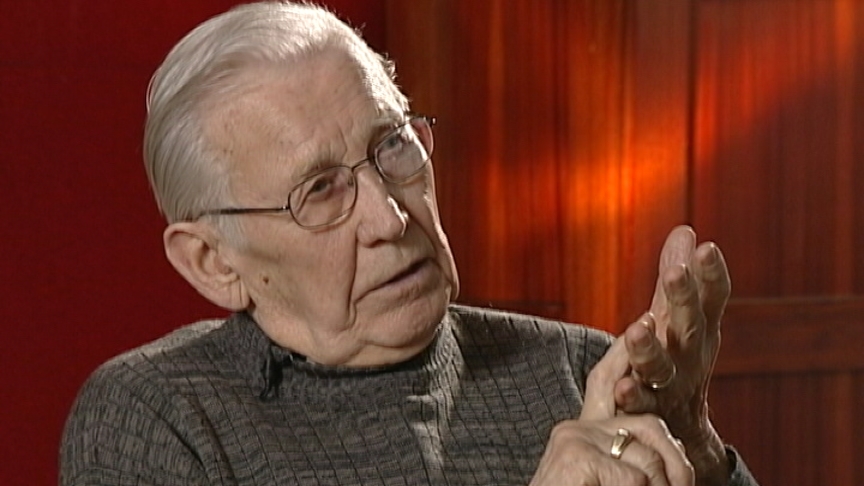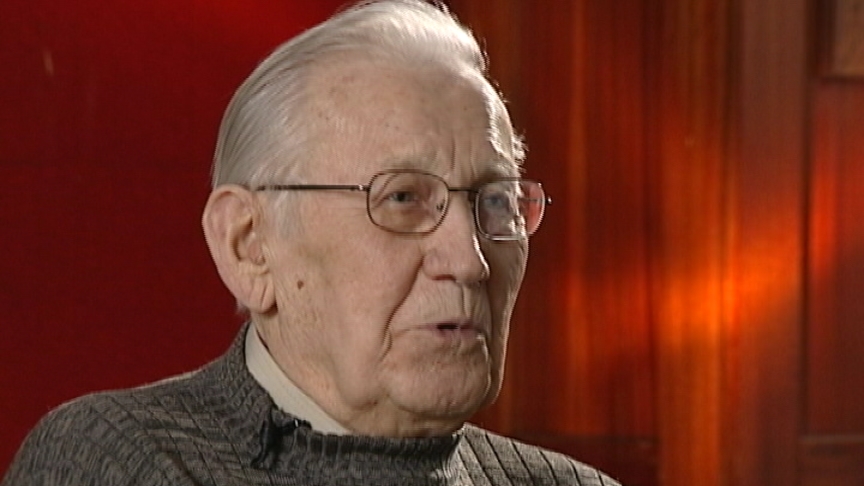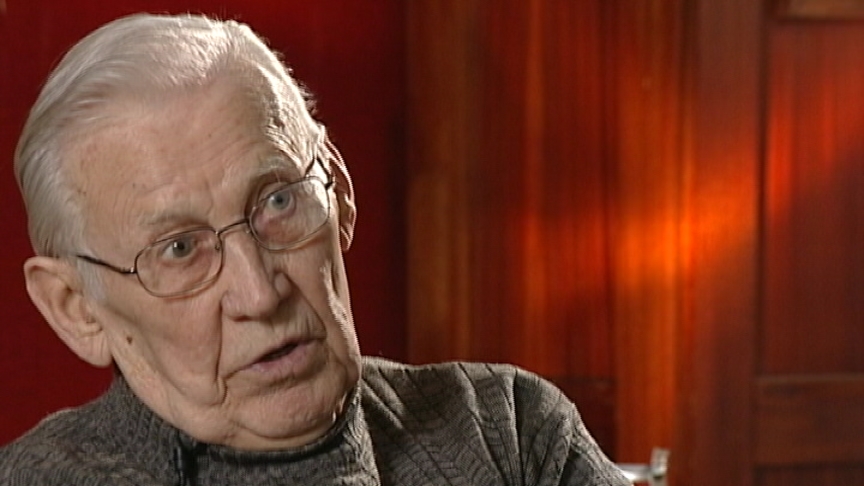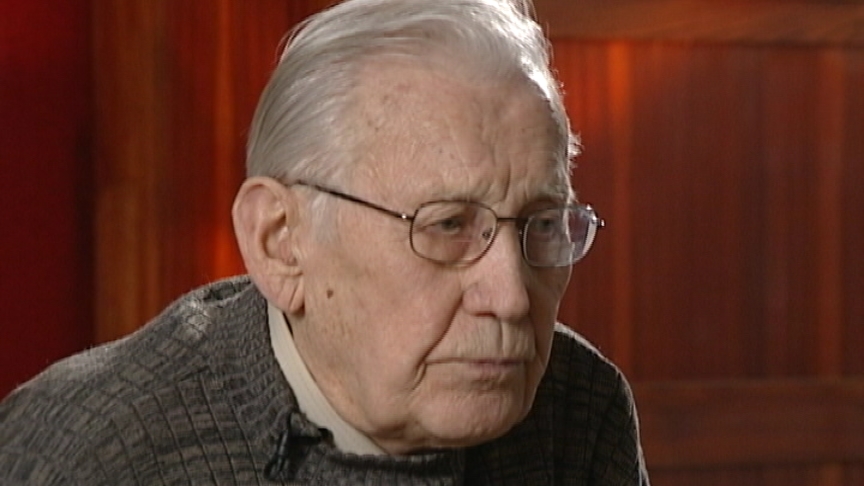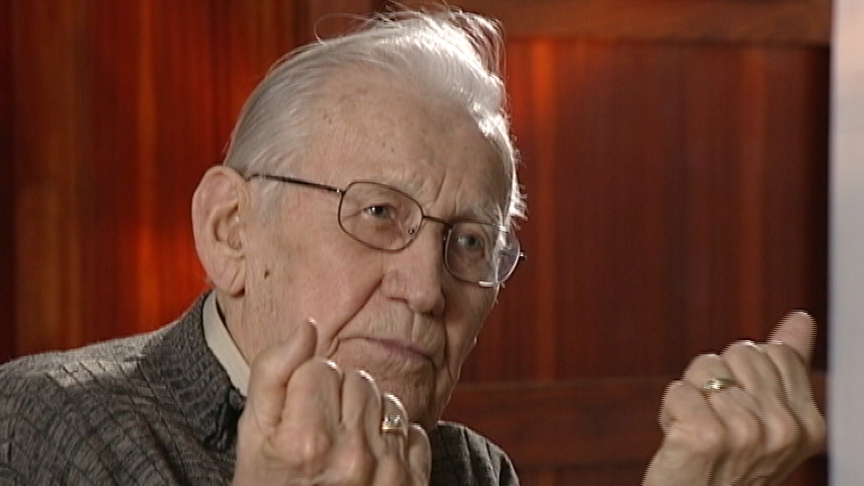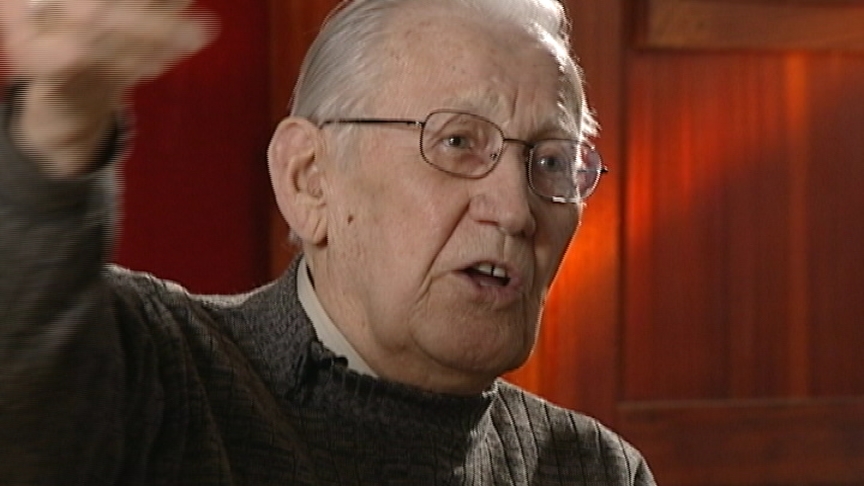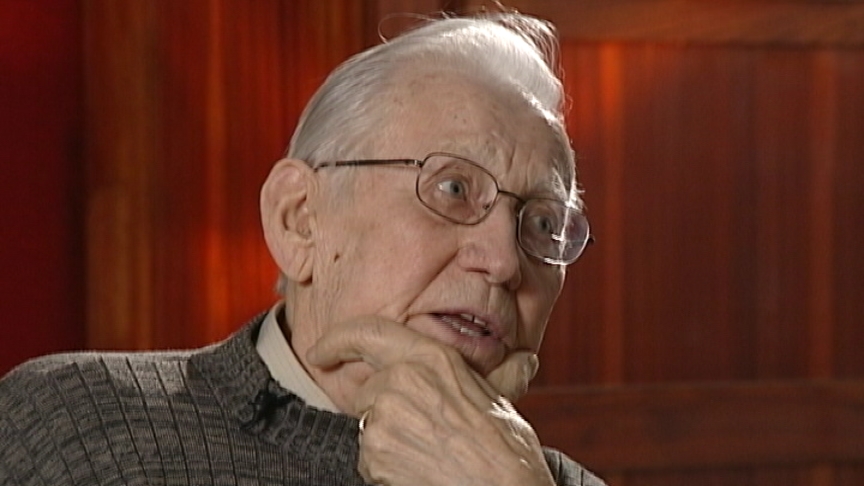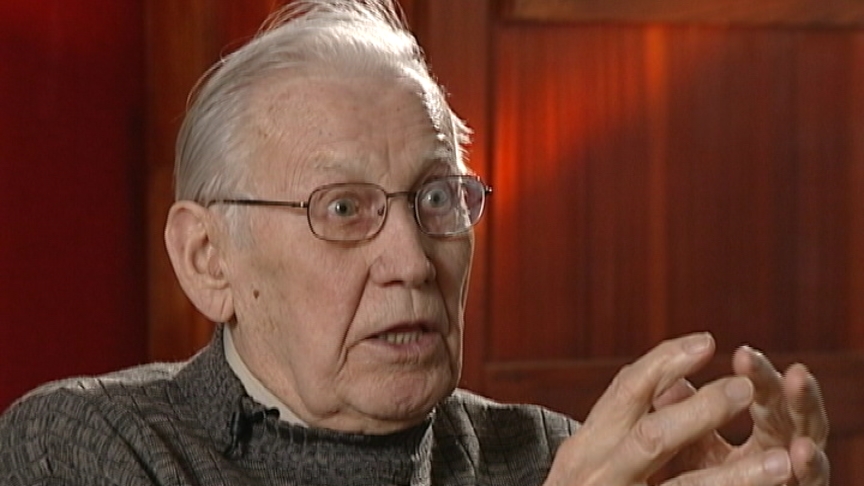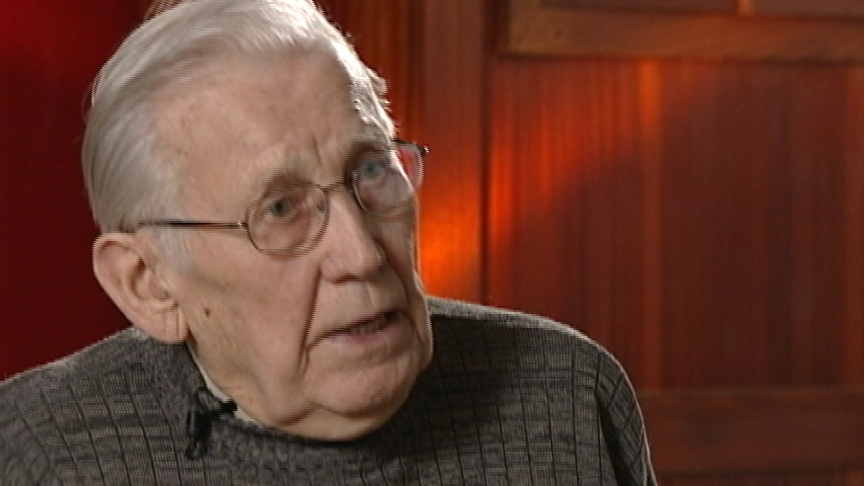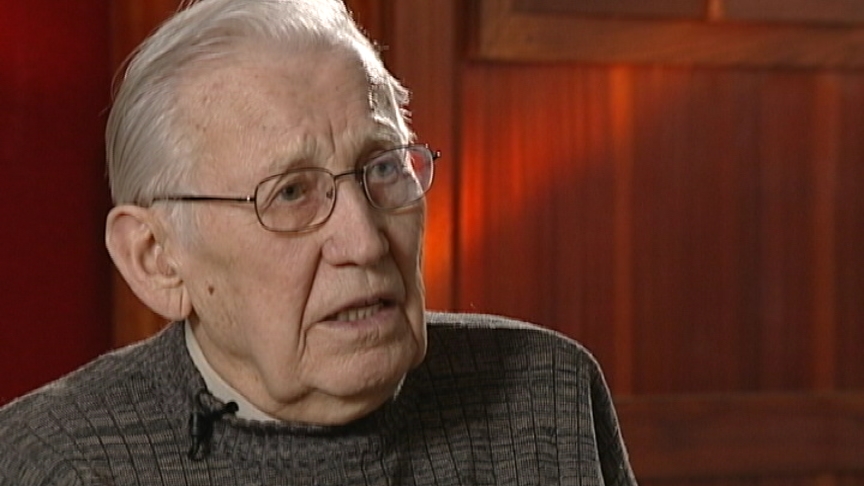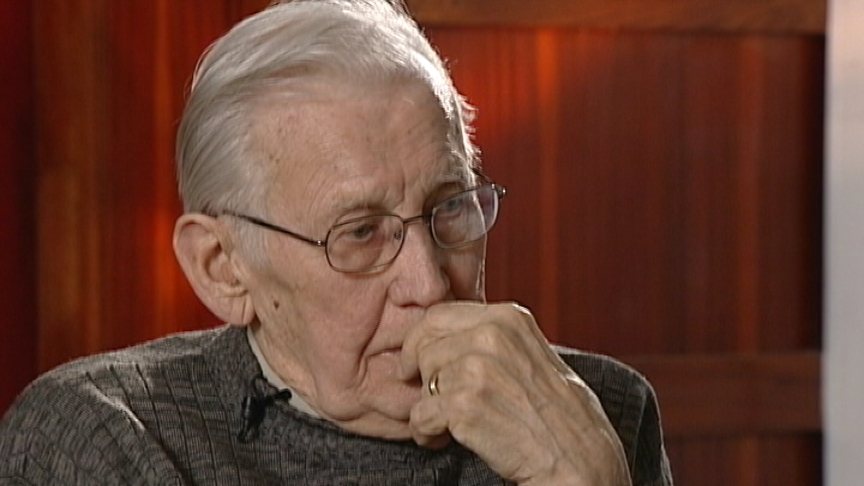We were called in by the station CO and he said, "Tonight," he
said, "it's gonna be a tough one." So, he says, "We're going
to do is, well, we're going to go to the Ruhr Valley, you know."
It's a, it's a, it's a, you know it's like, they open up the
curtains and then you see the map, he shows you where it is and
so on. And the last word he says is, "Go over there and give
those bastards hell," he says, "because" he says, "we're
at war." So, we could hardly wait. We got into the aircraft
and, and they line up, and we, we rendezvous over The Wash, in,
in the south of, in the east of England, eastern part of England.
We rendezvoued over there, and then you make your way across
Holland. You have to, you go across the Channel and then into
Holland. And along the coast of Holland are flag, flag ships, so
you have to get through those first, and then you get through
those flag ships and the, the fighter . . . there were fighter
bases along the way, and they had very, very powerful radar,
the Germans did. So they knew when the armada was coming over,
and they would send the, their co- coordinates in such a way
that their, their fighters would come over and they would attack
us just as soon as we got over the, the mainland. But if your
gonna avoided them, that was fine, you, you avoided them. So
we kept on flying, and you could see, you could see other
aircraft on the side. Every once in a while, one would go up
in flames or else it would go down because a fighter hit it, or
it was hit by flak or something of that nature. But we, we, we,
we didn't have too many mishaps, we had, we were okay until we
got over the target and we dropped the bombs. And now,
he was, he was heading home and we, we're flying. The, there
wasn't too, there wasn't too much to do on the way back. There
was some flak was flying, but there was the odd fighter came at
us and burst of machine gun from the rear gunner, or the mid-
upper gunner, the, the, that would scare them off, you know,
until we got to the coast. And I said to the navigator, I went
down from my guns from in the nose, I went down and I said to
him, "How far, what's the ETA, estimated time of arrival, to the
coast?" And he said, "Two minutes, navigator. Two minutes,
bombardier." And at that minute we got hit by two cannon shots.
And that was the last word he spoke, because he and, and the
wireless operator and the mid-upper gunner were all killed. They
were killed in the plane. And the <inaudible> and then the rear
gunner said, "The whole right side of the plane is on fire."
And we were hit by a Messerschmitt 110, who came
up . . . see, we didn't have a belly turret and they came up
underneath, and he just get past us, get in, into the nose, and
then the, the, the, the gunner, the shooter would have his guns,
and they had what they called schräge musik technique, and he
had his guns pointing back and he would just fire the gun, and he
fired two cannon shots. One would hit the mid part of the
aircraft and the other one would hit the two starboard motors.
And he'd peel off to the right. That was the technique that they
used. In this particular case, it was the last, we were the last,
the fifth plane that he had shot down that day, and he was, he
tired, or, or his plane wasn't working properly, I still have the
the transcript from the guy's log. And he ca-, he, he banked
off to the right and he banked right past the starboard . . . I
could see the whole aircraft in front of me. If I had been
sitting at the, at my guns I could've knocked him down just as
easily as, as pie, but I wasn't at my guns at the time. I was
down below, and so he, so they flew back and that was the end of
it. But I have, have the whole, the description of the whole
thing and, out of his log. A guy sent it to me. As a matter of
fact, I know who shot me down. I have his picture and, and, and
the wireless operator, also.



